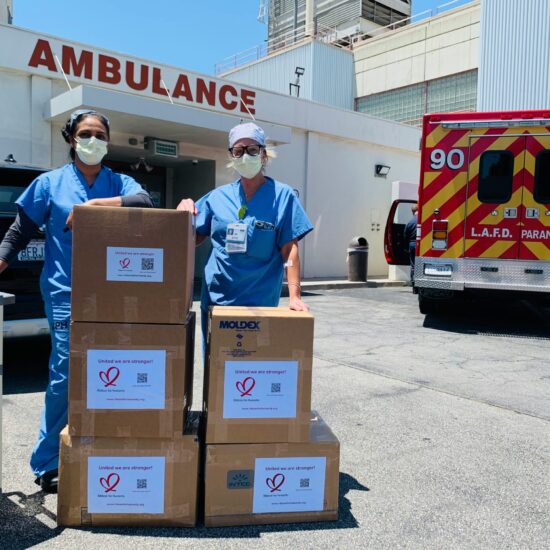 Theresa Brown, BSN, RN, OCN, PhD, is a staff nurse, the author of Critical Care: A New Nurse Faces Death, Life and Everything in Between, an Opinion Columnist for the New York Times “Bedside,” and a member of the National Advisory Council for the Center for Health Media and Policy.
Theresa Brown, BSN, RN, OCN, PhD, is a staff nurse, the author of Critical Care: A New Nurse Faces Death, Life and Everything in Between, an Opinion Columnist for the New York Times “Bedside,” and a member of the National Advisory Council for the Center for Health Media and Policy.
Danielle Ofri’s new book What Doctors Feel: How Emotions Affect the Practice of Medicine deserves an award for pulling back the curtain on one of the most taboo topics in health care: difficult feelings. The book is honest and brave, as well as eloquent and compelling. Ofri, a physician at Bellevue Hospital in New York and a frequent contributor to the New York Times, is a talented writer and quite a smart observer of human emotional responses, including her own.
I came to the book as a staff nurse and many of the experiences discussed, as well as the emotional responses they evoked, strongly resonated with me. That’s why I’ve titled this blog post “What Nurses and Doctors Feel,” because even though Ofri’s book focuses on MD’s, nurses can learn a lot from it about our own on-the-job feelings.
What Doctors Feel begins by exploring how hard it is for Ofri as a new physician to see the humanity in a homeless patient who is dirty, bug infested, and smells terrible. Her feeling of revulsion over the patients’ hygiene makes her unable to care for the patient. Then a nurse’s aide respectfully and gently offers to get the patient cleaned up, locating the human being underneath the patient’s dirty outer layer. Watching the exchange teaches Ofri an important lesson about the barriers to, and importance of, empathy.
I have a strong gag reflex that despite my years of nursing still gives me trouble when I have to empty emesis basins or bedpans. It’s an embarrassing reminder that underneath the uniform I am still very human. My challenge as a clinician is not to let patients realize that their bodily fluids disgust me at a physical level, even though emotionally all I want is to help them. “Breathe through your mouth,” I silently admonish myself while I strive to appear cheerfully unflappable on my way to flush the offending liquid. As humans we’re meant to be repulsed by acrid body odor, feces, vomit, and urine, but as clinicians we have to remember that human beings originated those unpleasant smells and we can never forget their humanity.
As What Doctors Feel progresses, Ofri explores even harder emotional topics that physicians (and nurses) struggle with: how hard it is to have patients die, how demoralizing to live in fear of making mistakes, and how incredibly stressful to live with the mistakes that inevitably get made.
Ofri is honest about her own mistakes and the pain they have caused her, and shows how the fear and shame that attach to mistakes can end up changing the way clinicians practice even years later. Again, I can testify to the pain caused by medical errors committed by my own hand and have written about it myself for the New York Times. In that column I also address the long-term fallout that nurses can experience following a mistake, retelling the story of Kim Hiatt, a nurse who was fired and ultimately killed herself after making a serious error at work.
The book’s conclusion discusses the psychic toll taken by accusations of malpractice. Even when exonerated in a court of law, MDs often continue to feel judged and blamed by malpractice suits, and those feelings create barriers with patients.
Nurses do not have to worry about malpractice suits in the same way that physicians do, but we certainly know what it is like to feel blamed and judged by patients and family members and how such feelings make it hard to care for people without resentment. Every nurse has had the experience of being watched like a hawk or aggressively interrogated by a family member. And every nurse has probably heard patients complain about other nurses. This behavior may be understandable, but it inevitably damages the trust between nurse and patient. Ofri says the same thing happens between patients and physicians when a malpractice suit is filed: the level of trust between the doctor and all of her patients may be compromised for months or years to come.
The really important takeaway message from this book is that the health care system needs to recognize the feelings of caregivers because, research shows, those feelings affect clinical performance. Physicians and nurses may find after reading it that they feel less alone as practitioners. And ideally, ‘less alone’ would also mean that MDs and RNs start to see each other more collegially as human beings struggling with very similar emotional challenges. In the fragmented world of modern health care, an increased sense of companionship and understanding may be the most important feeling of all, for caregivers and for our patients.







